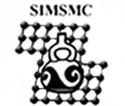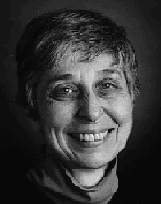
Professor Heather Lechtman
Home
SIMSMC Philosophy
Description
Objectives and Design
Instructors
Program Structure
Modules
Evening Lectures
Field Trips
Schedule
June 2005 SIMSMC
Participants
Module 1
Module 2
June 2004 SIMSMC
Participants
Module 1
Module 2
June 2003 SIMSMC
Participants
Module 1
Module 2
June 2002 SIMSMC
Participants
Module 1
Module 2
Comments
Course Manuals
Travel & Housing
Who Should Apply?
NSF Support
How to contact us
Requirements for
Applicants
APPLY!
 Professor of Archaeology and Ancient Technology
Professor of Archaeology and Ancient TechnologyDirector, Center for Materials Research in Archaeology and Ethnology Room 8-437, 77 Mass. Ave., Cambridge, MA 02139 617-253-2172 and 253-1375 (phone) 617-253-8090 (fax) lechtman@mit.edu |
|
BA Physics, Vassar College, 1956 MA History of Art and Archaeology, New York University, 1966 Diploma Archaeological Conservation, New York University, 1966 MacArthur Fellow, 1984-1989 Heather Lechtman carries out her fieldwork in the Andean zone of South America where she has spent over 30 years investigating the prehistoric systems of technology Andean peoples developed to manage a vertical, ecologically diverse, and high-stress environment. Her area of specialty is prehistoric Andean metallurgy. Her areas of training include anthropology, archaeology, conservation of archaeological artifacts, history of art, physics. Professor Lechtman's research interests in the cultural dynamics that prejudice the ways in which societies develop systems of technology are furthered by combining the methods of archaeology and materials analysis. From her field and laboratory studies Andean metallurgy emerges as a technology quintessentially Andean, distinct from the early metallurgies of western Asia, Europe, and Africa. Ongoing research programs involve a comparison of New World and Old World bronze metallurgies, including determination of the properties of copper-arsenic, copper-arsenic-nickel, and copper-tin bronze alloys; analysis and experimental reconstruction of the crucible ore smelting technology practiced at 5th millennium BCE Tal-i Iblis, Persia; and a comparative study of the production of copper ship's fasteners manufactured in the United States by Paul Revere, for installation in the USS Constitution, and those made by British shipbuilders in the 18th century. Selected Publications Afterword, in The Social Dynamics of Technology, M-A. Dobres and C.R. Hoffman, Eds., Smithsonian Institution Press: 223-232 (1999). The Materials Science of Material Culture: Examples
from the Andean Past, in Archaeometry of Pre-Columbian Sites
and Artifacts, D.A. Scott and P. Meyers, Eds., Getty Conservation
Institute: 3-11 (1994). |
|